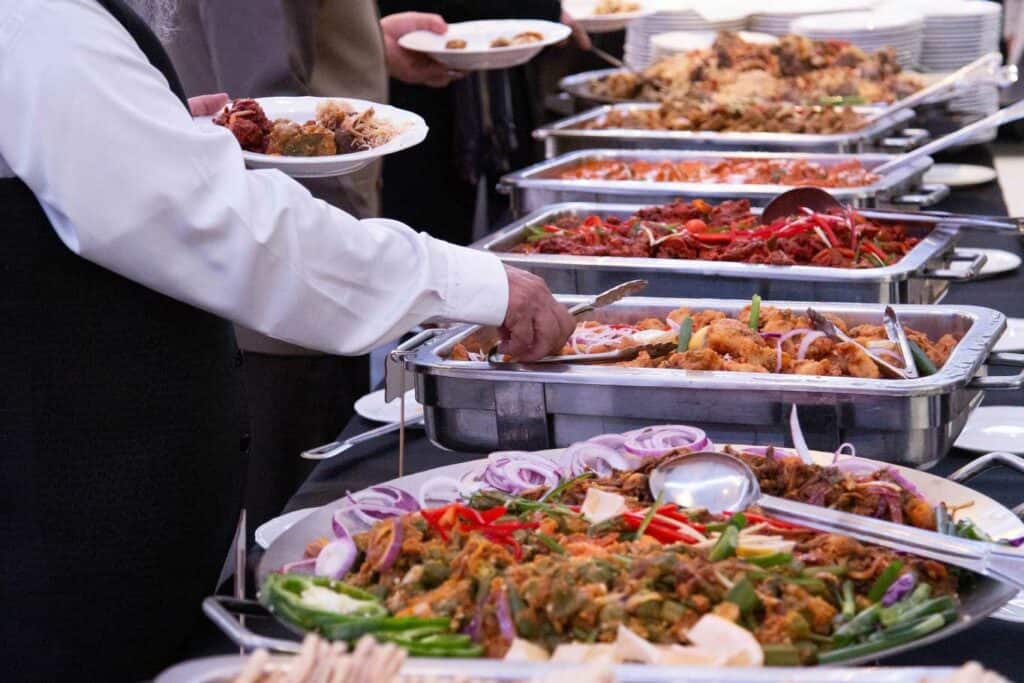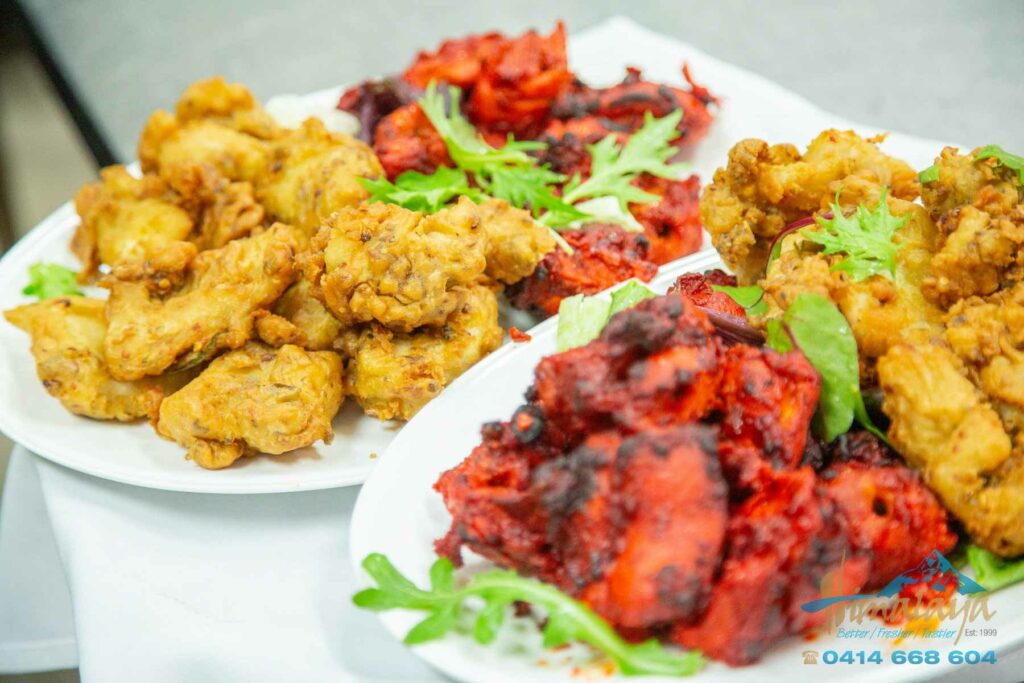From weddings to corporate events, the right catering style can make or break your Indian event. With an array of delectable dishes and diverse culinary traditions, Indian catering offers a unique and flavourful experience for your guests. But should you go for a buffet or plated catering service? In this blog post, you’ll discover the differences between these two popular catering styles and learn how to choose the best fit for your event – buffet vs plated choosing the right Indian catering style.
Key Takeaways
This article explores the characteristics and benefits of buffet and plated catering styles for Indian events.
Consider guest count, venue space & layout, budget constraints when selecting a catering style for an event.
Real-life examples provide insight into the advantages/drawbacks of each option to help inform decisions.
Understanding Buffet and Plated Catering Styles

Buffet and plated catering styles are two popular options for Indian events, each with their unique characteristics and benefits. Indian caterers, such as established Indian wedding caterers, offer a wide range of catering services for various occasions, from fine dining Indian restaurants to street food catering.
To assist in making an informed decision, we will delve into each style’s specifics.
Buffet Style Catering
Buffet style catering, often provided by Indian catering companies, allows guests the opportunity to select from a range of dishes and manage their portion sizes, creating a relaxed dining atmosphere. A typical buffet setup includes serving dishes and bowls for food, plates, cups, and utensils for guests, tablecloths for the buffet tables, additional buffets for larger events, and traffic flow management to ensure a seamless experience for guests.
Buffet style catering offers a wide variety of dishes, such as:
Tandoori Chicken
Vegetable Samosas
Paneer Tikka
Lamb Biryani
Lahori Fried Fish/Seekh Kebab
Vegetable Biryani
Fried Pepper Prawn
Chicken Tikka Kebabs
To manage portion control and minimise waste, chefs or servers behind the buffet line monitor the amounts of food served to guests. Cold food is easier to replenish and regulate temperature-wise, making it a viable option for buffet style catering at corporate events.
The customary protocol for serving traditional Indian cuisine in a buffet style catering includes:
Utilising hygienic serving utensils for each food item
Monitoring the buffet table for food safety
Utilising warming trays to maintain hot food at an appropriate temperature
Preserving cold food at a suitable temperature
Arranging food on tables with plates and cutlery
Inviting guests to serve themselves
Replenishing food as necessary
Adhering to organisational food safety procedures.
Plated Style Catering
Plated style catering, often found in fine dining Indian restaurants, is a service style where individual plates of food are prepared and served to each guest. It provides a formal dining experience, allowing guests to be seated and served their meals at the table. In a plated style catering, two or three courses are typically served, such as an appetizer, a main dish, and a dessert.
A plated style catering at an event, provided by an established Indian wedding caterer, entails guests being seated at designated tables and being served individual courses by wait staff. This is a traditional and sophisticated dining style wherein guests remain seated for the entirety of the meal. A plated style dining experience typically lasts approximately two hours.
While plated style catering offers a more formal dining experience, it may limit menu options and require more staff compared to buffet style catering. However, it provides greater control over portion sizes and can be more cost-efficient.
Factors to Consider When Choosing a Catering Style
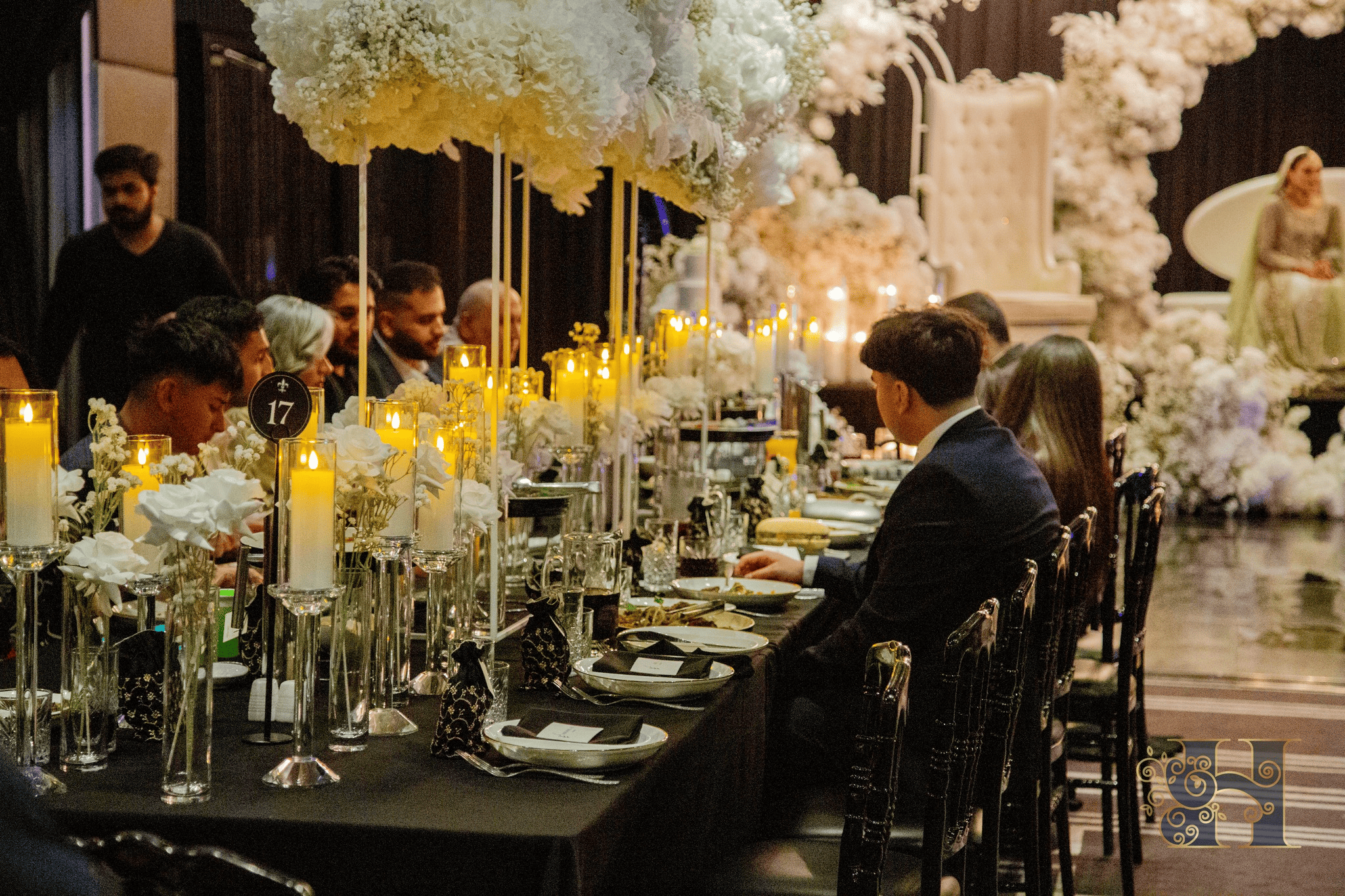
Various factors like guest count, venue space and layout, and budget constraints should be taken into account when choosing a catering style for your Indian event. These factors will help you determine the most suitable catering style for your event, ensuring a memorable and enjoyable dining experience for your guests.
Guest Count
The guest count plays a significant role in determining the catering style. Here are some guidelines:
Buffets are more suitable for larger events.
The minimum guest count suitable for plated style catering is approximately 25-30 guests.
The maximum guest count for plated style catering can range from 100-200 guests or higher.
For buffet style catering, it is recommended to have one server for every 20-30 guests and approximately 6 appetizer pieces per guest in attendance.
Venue Space and Layout
The venue space and layout can impact the choice of catering style. For example, buffets require more space for food stations and guest movement. A well-planned venue layout can enhance the buffet style catering experience by:
Ensuring ample space for setting up the buffet tables and food stations
Allowing for a smooth and organized movement through the buffet line
Providing enough room for guests to comfortably enjoy their meal
For plated style catering, it is advised to have one server for every 10 to 15 guests or two tables. Caterers may also require a prep kitchen or prep tables for food preparation.
Buffet style catering is optimal for:
venues that provide enough room to arrange tables in a line
high-end receptions
weddings
business lunches with an informal and social atmosphere.
Budget Constraints
Budget constraints may influence the choice of catering style, with buffets often being more cost-effective than plated catering. Plated catering is typically 30-50% more expensive than buffet catering, although the cost may fluctuate based on:
the type and quality of food
the number of guests
the location
the season.
Therefore, if budget is a primary concern, opting for a buffet catering style may be more appropriate.
Advantages and Disadvantages of Each Catering Style

Each catering style has its advantages and disadvantages, which should be considered when making a decision. Understanding the pros and cons of buffet and plated catering styles will help you select the most suitable option for your Indian event, ensuring a delightful and memorable dining experience for your guests.
Pros and Cons of Buffet Style Catering
Buffet style catering offers variety and flexibility, allowing guests to choose from a wide range of dishes and control their portion sizes. This catering style is especially convenient for accommodating guests with food allergies or restrictions, as they can select dishes that suit their dietary needs. However, buffet style catering may result in extended wait periods and potential food waste due to guests serving themselves too much food or not finishing their plates.
To reduce food waste in buffet catering, it is recommended to:
Monitor food waste at the service counter and on the customer’s plate
Avoid over-buying stock
Properly store food and practice stock rotation regularly
Ensure temperature control
Conduct food waste audits and share the results with patrons
Implementing these practices can help minimize food waste and promote sustainability.
On the other hand, buffet style catering allows for a more relaxed and social atmosphere, making it suitable for informal gatherings and events where guests are encouraged to interact and mingle. The advantages of buffet style catering include:
A wide selection of dishes, ensuring that there is something for everyone
Catering to diverse tastes and preferences
Flexibility in portion sizes and choices
Guests can serve themselves and choose what they want to eat
More casual and interactive dining experience
Buffet style catering is a popular choice for events where a relaxed and social atmosphere is desired.
Pros and Cons of Plated Style Catering
Plated style catering provides a more formal dining experience, involving pre-set courses served to guests at their tables. This catering style allows for greater oversight of food quality, presentation, and portion size, as well as potentially lower costs than buffet-style meals. However, plated style catering may limit menu options and require more staff compared to buffet style catering.
When it comes to plated style catering, challenges may include:
Coordination and timing complexities
Elevated costs
Potential for inadequate service when hiring non-professional caterers
Increased staffing requirements
The necessity of upholding culinary excellence
Despite these drawbacks, plated style catering can be a suitable option for those seeking a more sophisticated dining experience at Indian events.
Customising Your Indian Catering Menu
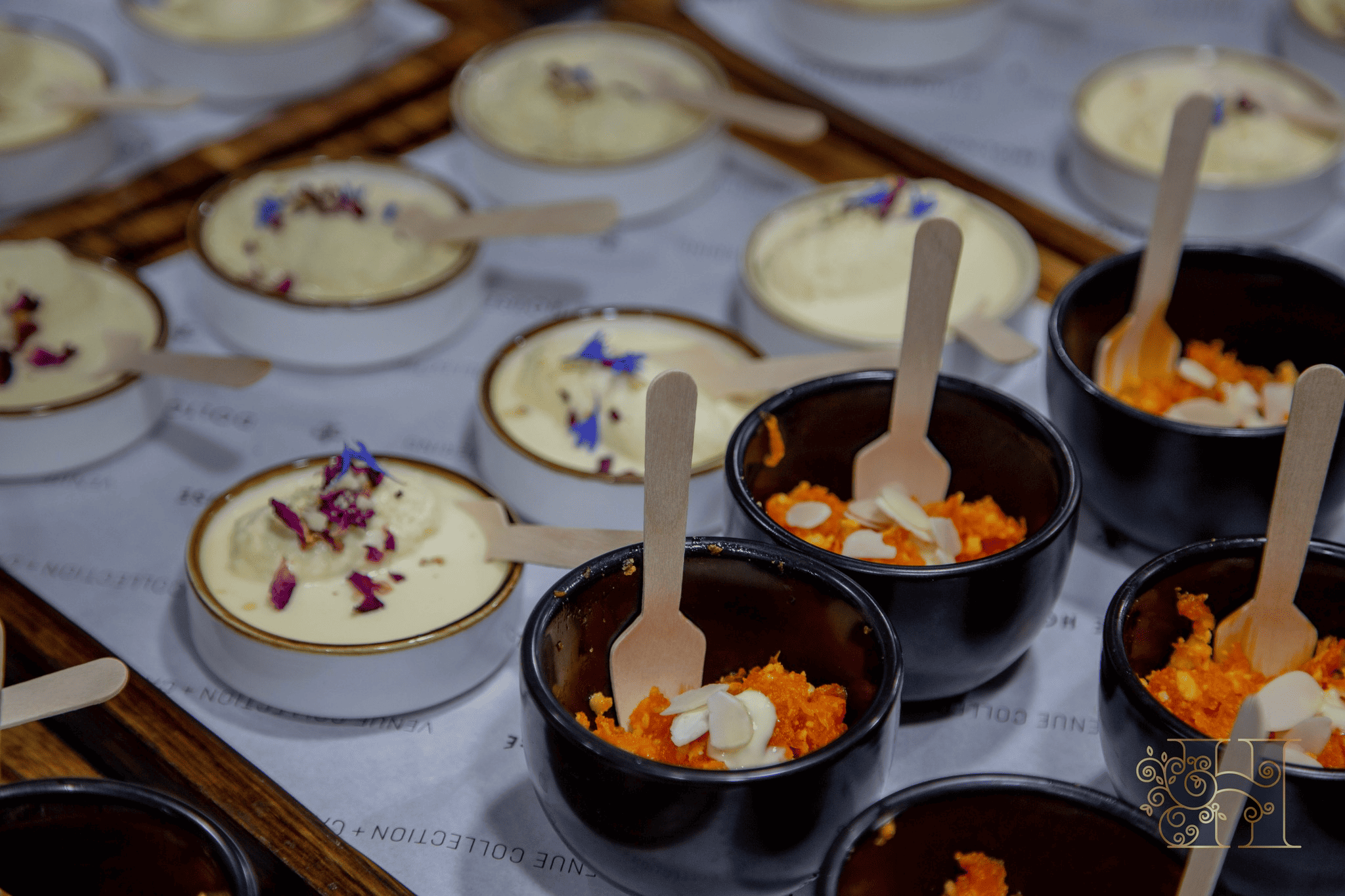
For both buffet and plated styles, tailoring your Indian catering menu is fundamental to deliver a diverse and satisfying dining experience. With a wide variety of dishes, flavours, and spices to choose from, creating a tailored Indian menu can delight your guests and provide an unforgettable culinary experience.
Buffet Style Menu Customisation
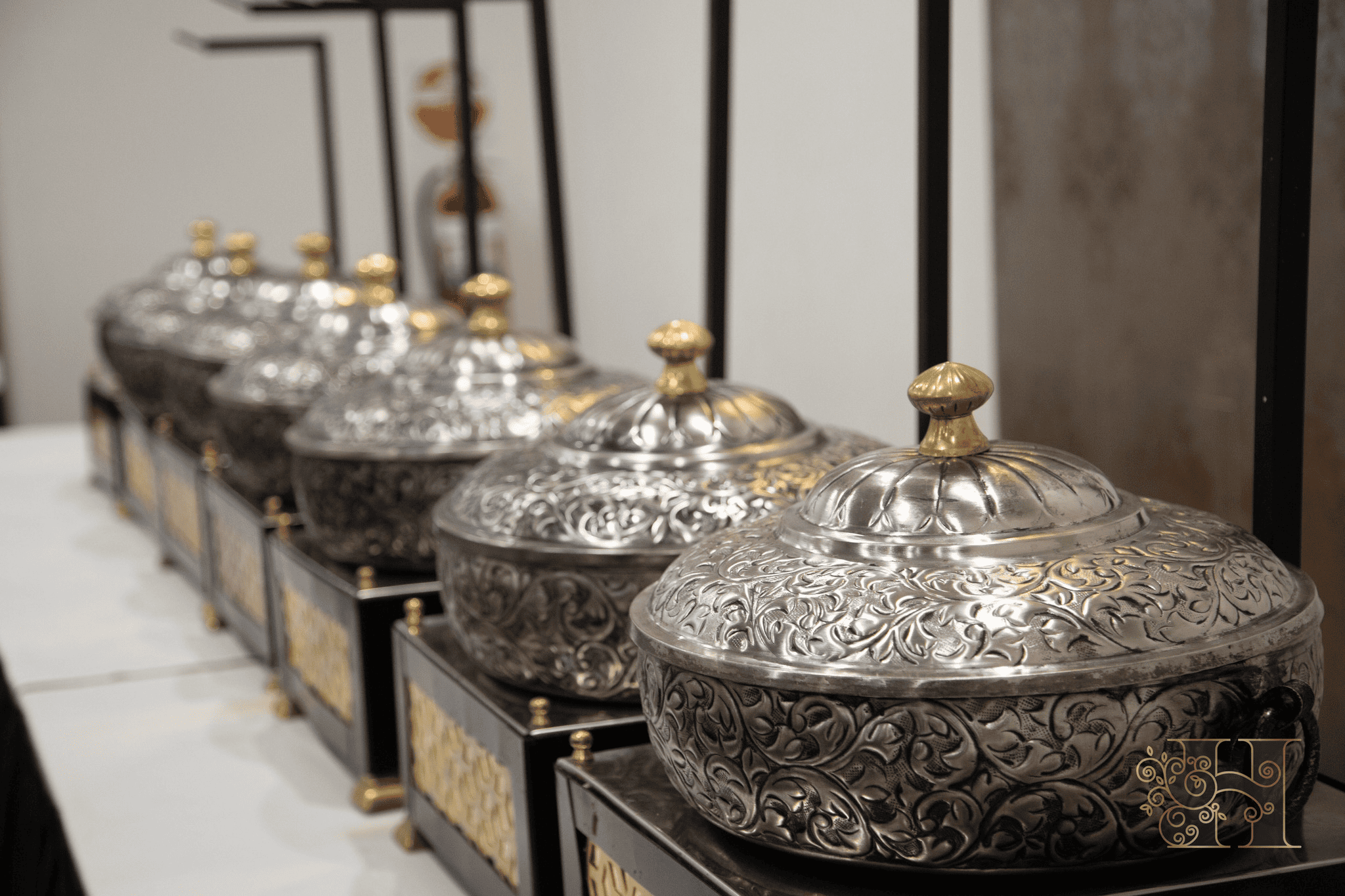
Buffet style menu customisation allows for a wide range of dishes, accommodating various dietary preferences and restrictions. With options like:
Chicken Biryani
Aloo Kulcha
Shahi Paneer
Tandoori roti
Peshawari naan
Jeera rice
Meat/Matar Pulao
Hara Bhara Salad
You can create a diverse and mouth-watering buffet for your guests to enjoy.
In addition to the main dishes, don’t forget about the appetizers and desserts. Popular Indian appetizers such as samosas, pakoras, and aloo tikki can whet your guests’ appetites, while traditional Indian desserts like Gulab Jamun, Kheer, and Rasgulla can provide a sweet finish to the meal. By offering a variety of dishes and flavours, your buffet style catering menu will cater to the diverse tastes and preferences of your guests.
Plated Style Menu Customization
Plated style menu customization involves selecting a set number of courses, with options for appetisers, entrees, and desserts. Popular appetisers served in plated Indian catering include Chicken Tikkas, Bhaji (vegetable fritters), and a variety of Indian snacks. Entrees may include chicken tikka masala, butter chicken, lamb curry, vegetable biryani, and paneer tikka. For dessert, consider serving traditional Indian sweets like Gulab Jamun and Kheer.
In customizing a plated style menu for Indian catering, considering the taste and texture of the dishes is crucial. It is advisable to serve dishes that contrast in taste and texture, such as pairing a ‘wet’ dish like Butter Chicken with a dry dish like Biryani. Furthermore, utilizing artistic plating techniques can enhance the presentation of Indian cuisine.
Tips for a Successful Indian Catering Experience
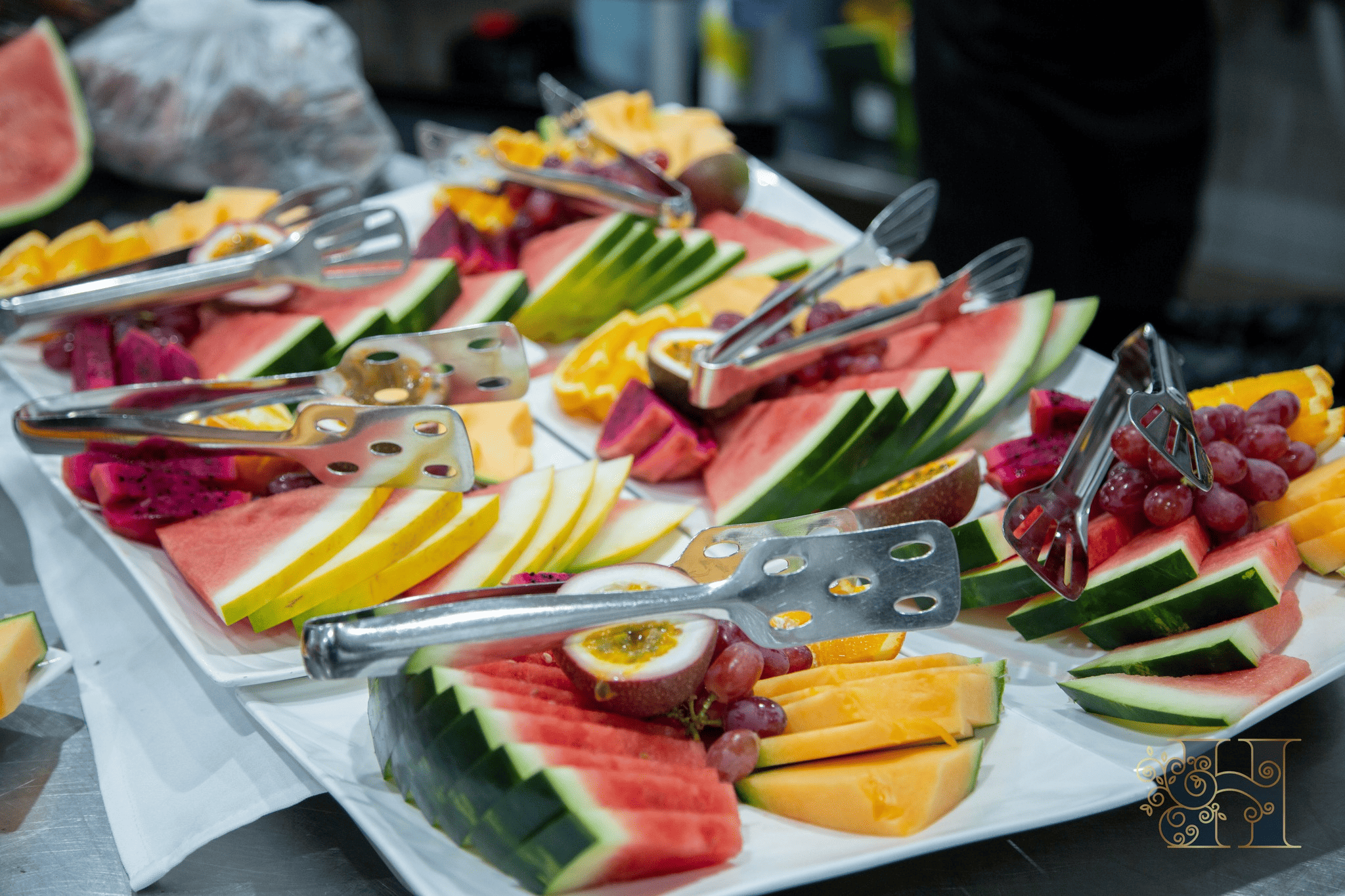
Here are some tips to guarantee a successful Indian catering experience:
Take into account the preferences and dietary restrictions of your guests when planning your menu. Indian cuisine offers a vast array of dishes, so work closely with your caterer to create a customized menu that suits the tastes and requirements of your guests.
Work closely with your Indian catering restaurant to ensure they understand your vision and requirements for the event. Communicate your expectations regarding food quality, presentation, and service to guarantee a smooth and enjoyable dining experience.
Be mindful of food safety and hygiene. Indian food is often spicy and contains various ingredients that may not be familiar to all guests. Ensure that your caterer follows proper food preparation and storage procedures to maintain the quality and safety of the food served at your event.
Taking these tips into account will set you on the right path to create a memorable and successful Indian catering experience for your guests.
Real-life Examples: Buffet vs Plated Catering at Indian Events
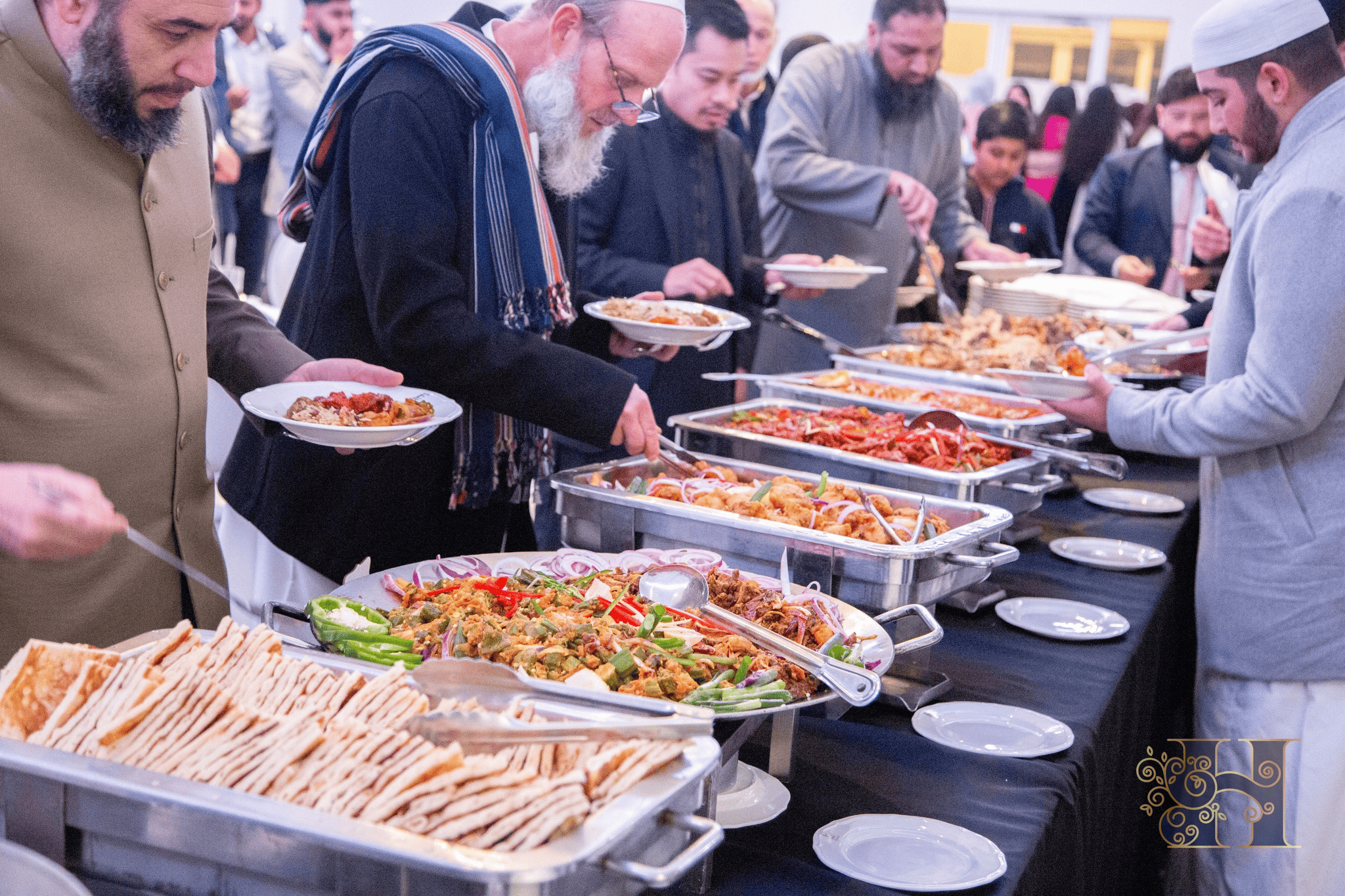
Real-life examples of buffet vs plated catering at Indian events can provide insight into the benefits and drawbacks of each style, helping to inform your decision. For instance, at a recent Indian wedding reception, the buffet style catering provided an extensive selection of dishes and allowed guests to mingle and socialize while enjoying their meal. However, some guests experienced longer wait times and the potential for food waste was higher than with plated catering.
In contrast, at another Indian event featuring plated style catering, guests enjoyed a more formal and sophisticated dining experience. The plated service allowed for greater control over portion sizes and enhanced food presentation. However, menu options were more limited and additional staff was required to serve the guests efficiently.
By considering these real-life examples, you can better determine which catering style is most suitable for your event.
Himalaya Restaurant Catering
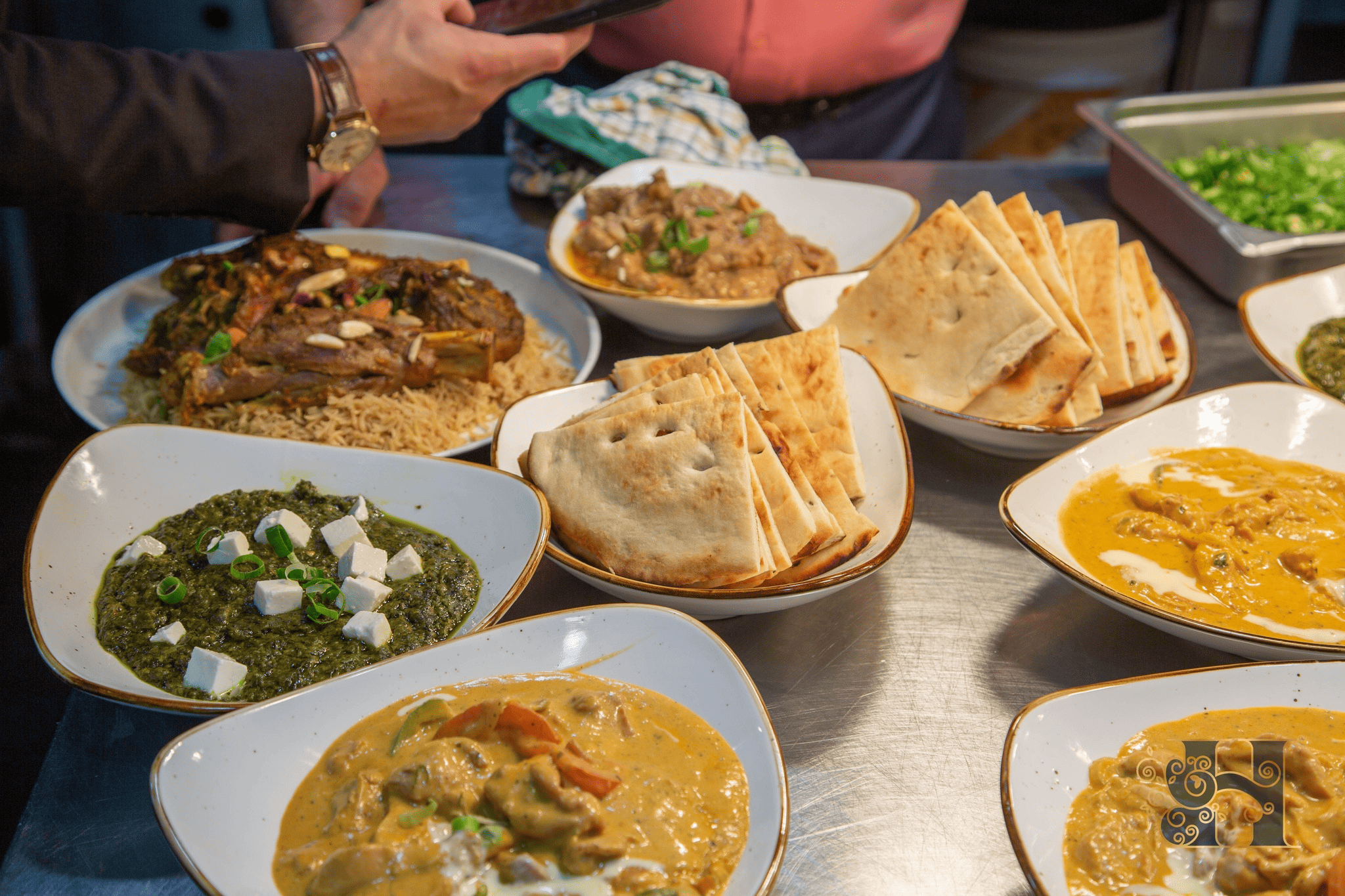
Himalaya Restaurant Catering, a renowned Pakistani and Indian restaurant in Sydney, offers both buffet and plated Indian catering services, with decades of experience and a reputation for producing high-quality Indian food. Their Indian food catering service caters to a wide range of events, from weddings to corporate gatherings and private parties, ensuring a memorable and enjoyable dining experience for all guests.
The chefs at Himalaya Restaurant Catering are skilled in preparing a diverse selection of authentic Indian dishes, which make up the authentic Indian food that they offer. From mouth-watering appetisers to rich and flavorful curries, whether you opt for buffet or plated catering, you can trust their team to deliver exceptional food that will delight your guests and leave a lasting impression.
In addition to their catering services, Himalaya Restaurant also offers a fine dining Indian restaurant experience, showcasing the best of Indian cuisine in an elegant and sophisticated setting. With their commitment to quality and authenticity, Himalaya Restaurant Catering is a top choice for your Indian event. Fill out this inquiry form here and our team will get back to you!
Summary
The choice between buffet and plated catering styles for your Indian event largely depends on factors such as guest count, venue space and layout, and budget constraints. Each style offers its own unique advantages and drawbacks, so it’s essential to consider your specific event requirements and preferences when making a decision. By working closely with your chosen Indian catering restaurant and customizing your menu to suit your guests’ tastes and dietary needs, you can ensure a successful and unforgettable dining experience for all.
Frequently Asked Questions
Is buffet better than plated?
Buffet-style meals bring more casualness than plated table service and they usually save you money on both food and service costs. Thus, buffet is a better option compared to plated dinners.
How is buffet presentation different from plating an individual serving?
Buffet presentation differs from plating individual servings by allowing guests to serve themselves from an array of dishes laid out at food stations, rather than having a pre-plated meal served directly to the table.
Is plated more expensive than buffet?
Plated dinners tend to be more expensive than buffets, typically costing 20% more. When comparing price options, three main elements should be considered.
What is an Indian cooking style?
Indian cooking style is characterized by its use of spices, curries, and a combination of 3-6 kinds of cooking methods including tempering, frying, sauteing, boiling, barbecuing, steaming, or baking in “tawa” (griddle) or “tandoor” (clay oven). North Indian cuisine also typically uses the tandoor for baking flat breads such as naan and kulcha.
How can I customize my Indian catering menu?
Collaborate with an Indian catering company to customize a menu that appeals to all tastes and dietary restrictions, providing your guests with an unforgettable dining experience.

